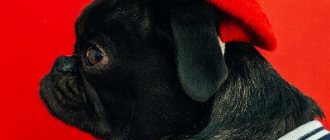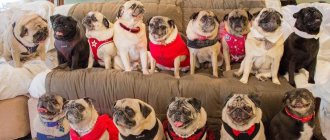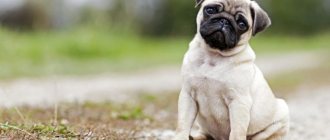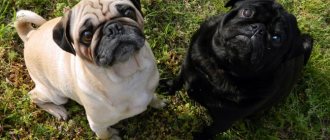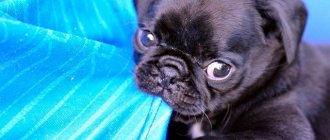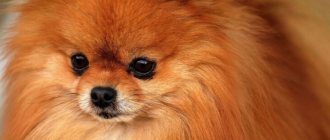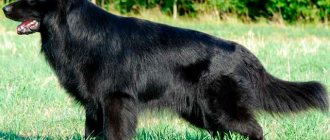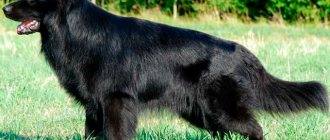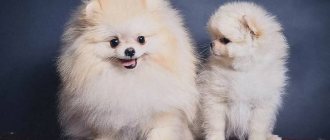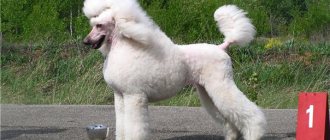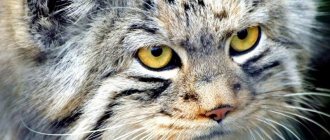The pug dog breed is one of the most mysterious in the world. Its origins go back centuries. The first mentions of this breed are found in the chronicles of China.
These decorative dogs were bred specifically for Chinese emperors and nobility. A servant was assigned to the dogs, who made sure that the animal was comfortable and cozy. The servant was also responsible for the health of the pet. A special collar with a bell was placed around the neck.
The Pug is an extremely friendly breed of dog. They become strongly attached to family members. Able to adapt to the owner's lifestyle.
But, do not forget that this breed is slightly lazy. Despite this, the dog will never refuse to play. Pug puppies in particular are quite active.
Origin of the Pug Breed
The breed is considered one of the oldest in the world, and originates in the East - according to various sources, it originates in China or India. Confucius's writings contain information about small dogs that lived exclusively in the homes of wealthy citizens.
Pugs were brought to Europe in the 15th-16th centuries, and the inhabitants of the Old World were more democratic, and everyone was allowed to keep a cute little dog, which was called the “Chinese mastiff”. The only problem was money - the puppy was very expensive, so only merchants or aristocrats could afford the purchase.
Pedigree pugs gained particular popularity after the four-legged pet saved King William the Quiet of Holland. A conspiracy was being prepared against the monarch, and he managed to avoid a sad fate only thanks to the dog, who woke up the high-ranking owner at the right moment.
Key points in training
Pugs are stubborn dogs and do not train very well . A treat would be a great incentive. You need to raise a puppy from the first months of life: call him by name, build a hierarchy (feed him after family, don’t let him sleep on furniture), accustom him to a daily routine.
By 4 months, the puppy should know its name. At this time, you can start learning the basic commands that the Pug will need: “No”, “Nearby”, “Place”.
Read about how to properly train a dog in the article: “Training a puppy: effective methods from dog handlers, learning commands at home.”
Even the smallest pets need competent education. It should not be rude or offensive. The best form is play when the puppy is interested in the process.
How old is the pug breed?
Researchers agree that the breed is at least 3 thousand years old. Their ancestors are said to be the Pekingese, who in turn descended from breeds called Lhasa Apso and Chemjo Apso, which guarded Tibetan monasteries. According to this theory, pugs were the result of genetic mutations or the crossing of long-haired dogs with representatives of other breeds. This version of the origin of dogs has supporters and opponents, who claim that short-haired animals appeared before the Pekingese, and not vice versa.
What types of pugs are there?
The pug is classified as a small or medium breed. Breeders distinguish three varieties - they are similar to each other, but have different sizes and body features:
- Terrier. Individuals with a long torso and neck are considered the most common and attractive.
- Bulldogs. Large dogs with a wide torso, oblique shoulder blades and barrel-shaped front paws.
- Shar Pei. The key characteristic of this variety is the large number of folds, which is why the dogs are often considered unattractive.
In addition to the standard types of purebred pugs, there are crosses with other breeds - Chinese Crested, Chihuahua, Pekingese, Beagle, Dachshund, etc. They inherit the exterior features of both parents, and often look unusual, but very cute.
Another variety that is not officially recognized, but is very popular among dog lovers, is the dwarf, or mini. They are small in size, but the problem is that 90% of them suffer from a genetic disease called pituitary dwarfism. Pathology not only stops the growth of dogs, but also significantly reduces their life expectancy.
Popular colors
There are four main types of color:
- classic black;
- beige-brown color of various tones (“fawn”);
- beige color with apricot tint (“sunlight fawn”, “apricot”);
- beige-brown color (“moonlight silver fawn”).
What does a pug dog look like?
Pugs have a stocky, muscular build and appear slightly clumsy, but they are not. If you look closely, you can see that these small dogs carry their heads proudly, and their movements are measured and graceful. Representatives of the breed that participate in exhibitions must meet the standards that were determined at the end of the last century.
Weight and height of pugs
The parameters of purebred pugs are determined by the British Kennel Club and the International Canine Association. According to them, the height of males is 30-33 cm, girls are slightly smaller - 25-30 cm. The weight of an adult varies from 6.3 to 8.1 kg. Representatives of the breed are prone to excess weight, which can cause health problems - if your pet dog looks large and weighs much more than normal, you should consult a veterinarian.
Coat and color
Pugs' fur is short, silky and smooth - it feels like velvet to the touch. The undercoat is thick, soft, and the color comes in four varieties:
- peach;
- pale yellow;
- silver;
- black.
The color of most purebred pugs is sand, cream or light red, but their muzzle is dark - it seems that dark spots were deliberately painted on it. Particularly welcome is the presence of a mark in the form of a diamond or a fingerprint on the forehead, as well as a stripe running from the back of the head to the tail. Another sign of a pure breed is the pronounced contrast between the shades of fur on the body and face.
The most popular and rare color of pugs is black. They began to be bred only at the beginning of the last century - previously puppies with this color were considered defective and discarded, but then the uniform color began to be considered an advantage.
Experienced dog breeders have noticed that light-colored dogs have a calmer and more docile character, while dark-colored dogs have a cheerful, energetic disposition.
Dog head
The structure of pugs is harmonious and proportional. The head, compared to the body, is quite large, round in shape, without dents or deformations. The muzzle is upturned, flattened, with pronounced folds.
Eyes, nose and jaws
The eyes are dark, round, shiny, very expressive and intelligent - thanks to their special look, pugs are often called the philosophers of the canine world. The jaws are quite wide, the teeth are not pronounced and are covered by the lips - a constantly open mouth and protruding tongue are considered a breed defect. The nose of pugs is black, velvety, with a clear dividing stripe.
Neck and ears
The neck is powerful and short, the back is level and straight, the chest is wide, slightly convex. A pug's ears are small, fit well to the head, feel velvety and soft to the touch, and can have different characteristics. The rose-shaped ear is small in size, protrudes slightly forward, and the inside is open. The “buttons” hang slightly over the head, the edges are adjacent to its surface, and the auditory openings are closed. It was once customary to crop ears at a certain age, but then this standard was abandoned.
Torso and limbs
The torso is quite short, massive and muscular. The chest is wide, slightly convex with the ribs laid back, the line of the back is even and straight. A breast that is sagging or too arched, like an arch, is considered a breed defect.
The paws of representatives of the breed are of medium length, well developed, strong and strong. When viewed from behind, they appear parallel to each other, but with pronounced joints. The toes are clearly separated and have black claws.
Pug tail
The tail is high, thick and rather short, lying tightly to the back. It is covered with thick hair and is usually curled in a “donut” shape. Some individuals have an additional double curl, which is considered a plus and a sign of purebred.
Characteristic diseases
Heart
- Myocarditis.
- Myocardial infarction.
- Myocardosis.
- Endocarditis.
Breath
- Laryngitis, acute swelling of the larynx.
- Acute bronchitis.
- Allergic bronchitis.
- Emphysema.
- Bronchiectasis.
Eyes
- Cataract.
- Entropy.
- Red eye.
- Dry eye syndrome.
- Progressive retinal atrophy.
- Eye loss.
Description and characteristics of the pug
Pugs are excellent companions, and, despite their melancholy appearance, they are very cheerful and cheerful creatures. They look clumsy and lazy, but a close acquaintance with the dog will completely dispel the erroneous impression - doggies love to run and play. This is especially true for puppies and young animals - with age, the pet will become calmer, but still will not miss the opportunity to frolic.
Dog character
It is not recommended to use a pug as a guard. Their disposition is too friendly and trusting, which sometimes does not benefit them, but at the same time, representatives of the breed have sensitive hearing and always let them know about the presence of a stranger.
The character flaws of purebred pugs are stubbornness and persistence. They know how to achieve their goal in any way, and will never do anything against their will. For example, if a dog does not want to go home after a walk, the owner will have to carry him in his arms - persuasion and prodding will not yield results.
Pug girls
Female pugs are calm, balanced, affectionate and flexible. They love to lie down on something warm and soft, preferably next to their owner. At the same time, girls often show truly feminine cunning - they can easily play any emotion that is beneficial to them at the moment.
Temperament can change for the worse during estrus, but most females just want to be left alone during this period.
Pug boy (male)
Males, compared to females, are more energetic, lively and curious. They can come into conflict with other animals, and rush to protect the owner at the slightest danger, even if the forces are unequal. Pugs should not be considered clumsy and overweight. During a walk, they can easily break off the leash and run away (representatives of this breed run very quickly), not paying attention to the calls of the owner. This happens especially often with male dogs who sense a female dog in heat.
Intelligence
The mental abilities of pugs are considered average, but they cannot be called stupid. They perfectly capture the mood of the owner, but do not always want to obey orders or commands due to their innate stubbornness. In other words, it’s easier for a dog to pretend that he doesn’t understand what they want from him than to bother himself and obey someone else’s will.
Behavior and habits
Pugs are balanced, affectionate and quiet - if a four-legged friend wants attention, he will not bark deafeningly, but will simply settle down next to his owner. These dogs do not like loneliness - if you leave them for a long time without company, they will begin to get bored, expressing suffering with all their appearance. They succeed in this brilliantly, since pugs are excellent actors. Pets know how to look at their owners in such a way that they completely lose the desire to deny the baby something or scold him for pranks.
Relationships within the family and with other animals
Pugs' friendliness extends to all family members and pets. This dog is a great option for children. She will gladly allow herself to be picked up, squeezed and stroked, she will patiently dress up and tolerate children's pranks. If the dog does not like the child’s actions, he will not growl or bite, but will simply try to quietly sneak away from the game.
Pugs also have good relationships with other dogs and cats, but if another animal appears in the house later, the pet may become jealous. The pug will not show aggression, but it may refuse to eat, become sad, and even get sick.
Purpose
Small, graceful pug dogs are very suitable for company for lonely elderly people; they will be loyal friends. They are not fussy, they love to lie on a sofa or armchair, and this is exactly what old people need. They are not bad as a companion for people with a passive lifestyle; they will be happy to lead a calm, measured pace of life, often lounging on the sofa.
Pugs are very friendly and suitable for hospitable owners. They play with pleasure with strangers, let themselves be hugged, squeezed, make funny faces, and amuse guests. Dogs become very attached to humans, and humans also reciprocate. They are ideal for living together in an apartment; they bark to announce the arrival of strangers or guests.
Features of the breed and content
The pug is not a whimsical or capricious breed, but these dogs have characteristics and a tendency to certain diseases. To avoid health problems, your dog needs proper care.
Feeding pugs
The main problem of pugs is a tendency to obesity, so the diet must be carefully planned. It should not be too high in calories, but contain useful substances and additives. You can cook your dog’s food yourself or buy special food, giving preference to premium products.
The basis of the natural menu is porridge, with the exception of semolina, vegetables and meat. It is given raw, but must be frozen first. It is not recommended to give chicken, as it often causes allergic reactions. Flour and sweets are prohibited - the owner must learn to refuse the dog, because he is good at begging for treats.
Hygiene procedures
The short hair of pugs does not cause any discomfort to owners. It is enough to comb it once a week, and during shedding - twice every seven days. There is no need to bathe your pet often, otherwise the protective barrier of its skin will be broken; it is enough to carry out bathing procedures 1-2 times a month. In the summer, you can rinse your dog in the shower and be sure to wipe the folds where dirt and debris accumulate. Ears and eyes are cleaned once every 7 days using special liquids, claws are trimmed once every 3 months.
Walking the dog
You need to walk your pug daily for at least 1-1.5 hours, with puppies up to 3 months old - about half an hour. The main condition is that you should not choose too fast a pace - a jog lasting 10-15 minutes is enough to maintain tone. On the street, it is important to prevent your dog from overheating or hypothermia - they can be fatal for him.
In winter, you should take care of warm clothes, and in extreme heat, walk only in the shade and reduce the duration of exercise.
Raising and training a dog
Purebred pugs are difficult to train not because of low intelligence, but because of stubbornness and reluctance to learn. They do not accept rude or cruel treatment, so they will have to act exclusively with affection. We should not forget that the breed has always been considered a sofa breed, and the ability to clearly carry out commands is not genetically inherent in its representatives, so you should not expect a brilliant result.
Mating and offspring of a pug
The first mating can be carried out upon reaching a certain age - 12 months for a female and 15 months for a male. Beforehand, dogs are given prophylaxis against worms and parasites, tested for infections that can be transmitted in utero, and a “date” is arranged 10-14 days after the start of estrus. If the female begins to retract her tail, the next 2-3 days are favorable for conception.
Possible diseases of the pet
In addition to obesity, purebred pugs may have problems with the respiratory system. Due to the special structure of the nasopharynx, they snore and snort, but this is a normal phenomenon - you should be wary if the dog begins to choke. Most often this happens during extreme heat or with excessive passion for active games.
The second common problem is related to the eyes - mechanical injuries and infectious diseases are possible. If your dog tries to rub his eyes with his paws, blinks too often, and there is discharge in the corners, you should consult a veterinarian.
Representatives of the breed look well-built and strong, but they must be handled carefully. If you drop a pug from a height onto a hard surface, damage to the spine and joints is possible, which is manifested by a change in gait.
Nutrition
A purebred puppy will grow up healthy only with a balanced diet. The diet is allowed in a mixed form or may consist of exclusively industrial, natural feed.
A feature of decorative dogs is the physiological inability to feed on liquid food due to the structure of the muzzle and the location of the nostrils. Otherwise they are unpretentious. Sometimes a dog requires vitamins, which are prescribed by a specialist after examining the pet.
Owners are advised to feed pugs no more than 2-3 times a day. Dogs are prone to overeating, gaining excess weight, and love to beg for tidbits, attracting them with a pitiful appearance. If the puppy has just arrived at a new home, it is advisable to maintain order and feeding rations. The breeder will tell you what to feed the pug during the period of adaptation to the new family.
Premium commercial feed can be mixed with natural meat, vegetables and dairy products can be added. Natural feeding should contain foods with calcium - milk porridge, cottage cheese, omelet. The menu is based on meat foods with the inclusion of poultry, fish, offal, and chicken yolk. You should provide your pet with fresh water at all times.
Pros and cons of the pug breed
Pugs are wonderful friends and companions that have a lot of advantages. The benefits of owning these dogs include:
- short hair – it does not remain on clothes and does not require careful grooming;
- accommodating, calm character - dogs get along well with children and other animals;
- understand the owner from the first word, perfectly capture the mood;
- rarely bark or make noise, practically do not play pranks;
- not too picky about food and living conditions.
The disadvantages of the breed include the stubbornness and persistence of pets. They love to sleep in bed, and it is impossible to kick them out of there - if you close the door, the dog will gnaw and scratch it until the owner changes his mind. They snore in their sleep, which can prevent their owners from getting a good night's sleep.
Pugs live a long time, but throughout their lives they can often get sick, and some pathologies require surgery and expensive treatment. Your dog's eyes need to be carefully looked after and protected from damage - even simple contact with dirt and dust can cause problems. In addition, pets are often obese - it is almost impossible to refuse a small dog that looks tenderly at its owner and begs for a treat.
Relationships with other animals
Pugs get along well with other dogs, cats and other animals. But, as in the case of children, the dog needs to be given enough attention so that he does not become jealous or start a rivalry.
Photo: krasivosti.pro
Scottish Fold cats: description, character and care
Puppy cost
The price of a dog depends on the pedigree, appearance of the baby and his parents. The offspring of exhibition winners, puppies with rare colors, as well as individuals that can be used for breeding are very expensive.
With documents
Real pugs that meet established standards are sold only in kennels. Their cost starts from $250 and reaches $1000 or more, but in this case the owners will have complete confidence in the purchase.
A young purebred dog can participate in exhibitions, and after reaching puberty it will become a good producer.
Without documents
Dogs sold through advertisements are suitable exclusively as pets. Failure to meet breed standards is the smallest problem an owner may encounter. Sometimes pug puppies (especially if they are too cheap) have serious illnesses, and instead of positive things they bring trouble and grief to their new owners.
A healthy baby should be active and curious, have a shiny coat, pink gums and white teeth, and stand firmly on its paws. True, meeting these conditions is not a guarantee of ideal health, since some diseases manifest themselves in adulthood.
Owner reviews
“It’s difficult to raise a pug because he has a very sad look. That's why our Peach is allowed everything. It is impossible to calmly eat food - he will look you in the eye, beg with his paw, and climb onto the table despite commands.
Pugs are very kind, ours pesters everyone on the street: cats, dogs, people, although not everyone likes it.
He loves to catch air in the car, when you turn on the hairdryer, or when you blow on him, so to speak, a plug.
He tries to lick everyone, gets in everyone’s face.
He picks up all sorts of nasty things from the floor and eats them, running away so that they don’t take them away. Our Peach loves to eat everything, especially sweets, even though he’s not allowed to. He enjoys stealing candy.
If he needs to wake me up, he will jump and walk on me with all his heavy weight, lick my ears and face, which is impossible to tolerate.
Overall a very cheerful, active dog. We thought he would be lazy, but he’s not.”
Alina Golovina, Gomel.
“We bought our pug when he was 4 months old, they say this is a big age for dogs, but we fell in love with him at first sight. He was quiet and the most modest of them all. However, he showed himself at home and ran very actively!
We didn’t punish him, and he began to play dirty tricks, you know, like children who are allowed to do everything. One day he ate my expensive shoes, and I brutally kicked him in the backside. I was wrong, it was my big mistake, he needs to buy toys from childhood. And now he doesn’t recognize either toys or shoes. He has become very grown up.
We lived in such a way that he did not play with other dogs, and as a result he is an antisocial dog. He knows only us and no one else. In the city he is afraid of everyone and does not want to communicate with his relatives. But he knows all his family and friends by name, loves us all until he screams in his throat. If we suddenly go on vacation, he suffers a lot, and we talk to him on the phone and persuade him to eat. He always sleeps with us, he loves us under the covers, like a little son.
He chose me to be in charge right away, probably punishing me severely! Pugs are very smart, they understand everything. And you know, this is the most devoted friend. I adore him and love him madly!”
Ksenia Perovskaya, Moscow.
